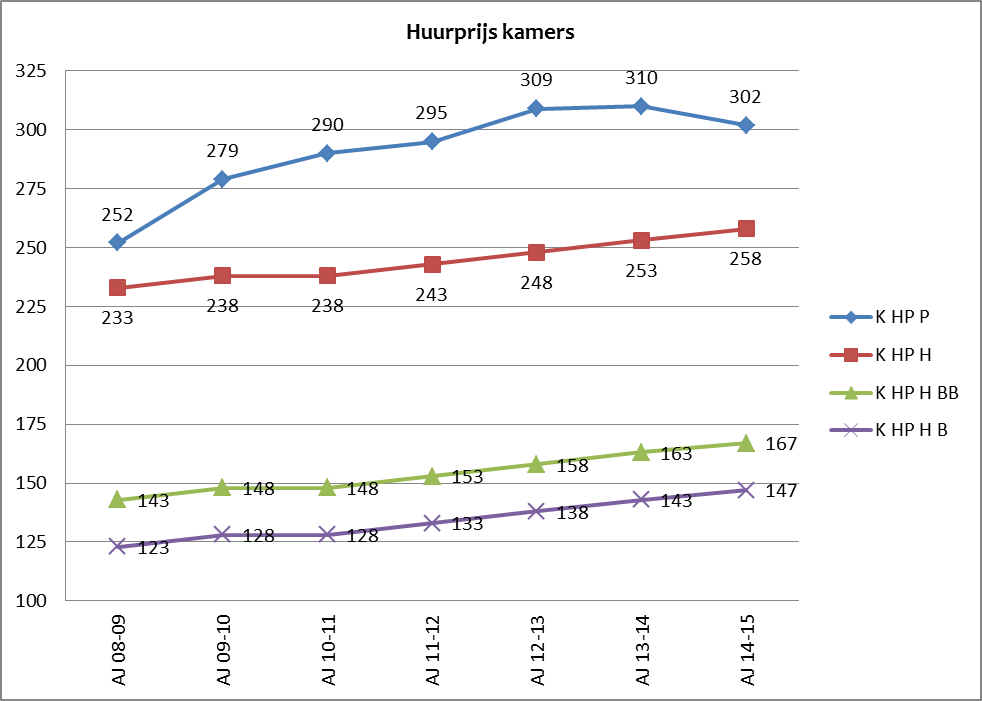NEW ZEALAND NEW ZEALAND1 (2000) EXISTING FUNDING CANNOT
10 GEOGRAPHICAL FEATURES OF AUSTRALIA AND NEW ZEALAND BROADER1018 INTERSTATE AND NEW ZEALAND MATTERS PURPOSE THIS PROCEDURE
2009 NEW ZEALAND ORAL HEALTH SURVEY ADULT QUESTIONNAIRE PUBLISHED
21 CRAWSHAW ACE PAPERS NEOLIBERALISM IN NEW ZEALAND
21 IN THE HIGH COURT OF NEW ZEALAND AUCKLAND
3 RECOMMENDED STATEMENT FOR VALUES IN THE NEW ZEALAND
New Zealand
New Zealand1 (2000)
Existing funding cannot meet current demands on the Nature Heritage Fund, Nga Whenua Rahui and QEII Trust, nor provide assistance for ongoing pest management to maintain biodiversity values in areas protected through these mechanisms.
Incentives that work
In 1990 the Government set up an independent contestable fund — the Forest Heritage Fund (now the Nature Heritage Fund) — to protect indigenous forests and associated ecosystems on private land. Another similar fund — Nga Whenua Rahui — was established for the same purpose, but with a focus on Maori-owned land.
Now, ten years down the track, 236 740 hectares of privately owned native forests have been formally protected through acquisition, covenants, kawenata and Maori reservations; most have been fenced. Much of this land would have otherwise been logged, cleared or further browsed, with a loss of important natural habitats. Recently both funds were broadened in scope to include ecosystems other than forests, such as wetlands, dune environments and tussocklands. The new name — Nature Heritage Fund — reflects this shift (Nga Whenua Rahui retains its name).
Nga Whenua Rahui is distinct from the Nature Heritage Fund in that it is geared towards Maori landowners retaining tino rangatiratanga (ownership and control) of their land while protecting indigenous forests and other ecosystems.
A recent example of Nga Whenua Rahui helping to secure a prize piece of New Zealand’s biodiversity jigsaw is an area near Whangaruru harbour in Northland. The 167 hectares of mixed virgin and regenerating coastal broadleaf forest feature a large freshwater wetland, a rarity on this coast. The area is home to the North Island brown kiwi and pateke (brown teal), both threatened species. As part of its active kaitiaki role, the managing Whanau Trust hopes to create and sustain a viable breeding population of pateke on the wetland. Nga Whenua Rahui has formally protected the area using a kawenata (or covenant) and has assisted with fencing and clearing pateke landing areas within the wetland.
Despite the success of Nga Whenua Rahui and the Nature Heritage Fund in securing areas, these funds do not currently cover ongoing pest control to maintain the ecosystems and habitats leaving these costs to landowners where areas are covenanted.
Action
e) Expand and modify existing national funding mechanisms (the Nature Heritage Fund, Nga Whenua Rahui and Queen Elizabeth II National Trust) to meet current demand by landowners and communities where a priority, to protect habitats and ecosystems important for indigenous biodiversity, and to maintain the condition of protected areas through fencing and pest management.
Key players: DoC*, MfE*, LAs, iwi/hapu, QEII Trust, primary production sector, landowners, NGOs, community groups
New Zealand’s domestic policy2 does not support the implementation of market-based subsidies. A number of funds have been established, however, to encourage the conservation and sustainable use of biodiversity. These include:
The Nature Heritage Fund - The purpose of the fund is to protect indigenous ecosystems that represent the full range of natural diversity originally present in the New Zealand landscape by providing assistance for voluntary conservation.
Nga Whenua Rahui - Provides funding to protect indigenous ecosystems on Maori land that represent the full range of natural diversity originally present in the landscape by providing funds to encourage voluntary conservation.
The Biodiversity Advice Fund - Focuses on providing information and advice to land managers. It funds projects which inspire landholders or groups to better protect indigenous species on their land, by way of workshops, field-days, and publications
The Biodiversity Condition Fund - Aims to improve and maintain the condition of areas of indigenous vegetation, species and habitats. The fund seeks to broaden community effort in the management of indigenous biodiversity. Suitable projects may include fencing or pest control on private land.
The Queen Elizabeth II National Trust (QEII)– Enables landowners to protect special features on their land through its open space covenants. QEII offers:
Expertise in legal protection
Expertise in monitoring programmes
Field representatives working with landowners
An independent relationship with landowners
A reputation of trust, respect and partnership with landowners
1 New Zealand (2000). The New Zealand Biodiversity Strategy, February 2000, 144 pp.
2 New Zealand (2007). Third National Report, June 2007, 177 pp.
AMBIENT NOISE RAYLEIGH WAVE TOMOGRAPHY OF NEW ZEALAND FANCHI
AN INDICATION OF NEW ZEALANDERS’ HEALTH 2007 PUBLIC HEALTH
APPROVED LIST OF NEW ZEALAND FBOS FOR EXPORT TO
Tags: (2000) existing, cannot, (2000), existing, funding, zealand, zealand1
- ANEXO REGLAMENTO PARA EL USO DE ESTACIONAMIENTOS UNIVERSITARIOS DE
- VERARBEITUNG PERSONENBEZOGENER DATEN AUF PRIVATEN DATENVERARBEITUNGSGERÄTEN SEPTEMBER 2017 VERSION
- AN OPEN LETTER TO THE PRESIDENT OF THE REPUBLIC
- CARTA DE REFERENCIAS PERSONALES YO MAYOR DE EDAD
- FIRST CONDITIONAL USE WE USE THE FIRST CONDITIONAL TO
- STROKE A CARER’S GUIDE WHEN SOMEONE CLOSE TO YOU
- COMO VACUNARSE UNO MISMO A CONTINUACIÓN SE RELATA COMO
- 6 REPUBLICA DE CHILE MINISTERIO DE SALUD DPTO
- MIGRAINE AND STROKE MIGRAINE IS A COMPLEX CONDITION WHICH
- A ACTIVIDAD CAMBIOS TECNOLÓGICOS Y REVOLUCIÓN DE LOS TRANSPORTES
- THE SALAMANCA CORPUS A CORNISH DIALOGUE (1787) AUTHOR CHARLES
- BALANCE PROBLEMS AFTER STROKE PROBLEMS WITH BALANCE ARE COMMON
- FIFTYTHIRD COUNTY AUDITORS INSTITUTE SPONSORED BY LYNDON B JOHNSON
- TARIKH SETIAUSAHA KEHORMAT WISMA KPPK KEDAH BLOK
- HIGH BLOOD PRESSURE AND STROKE HIGH BLOOD PRESSURE USUALLY
- O NTARIO NETWORK OF SEXUAL ASSAULT & DOMESTIC VIOLENCE
- INSTRUCTIVO PARA REEMPLAZO DE TAXIS BENEFICIARIO DEL REEMPLAZO
- CONTINENCE PROBLEMS AFTER STROKE IT IS COMMON FOR PEOPLE
- TÍTULO CARACTERÍSTICAS NEUROPSICOLÓGICAS Y VARIABILIDAD DEL RITMO CARDIACO EN
- ISBARBEITSKREIS LINKEBENE SKWSGS 82 JUGENDLICHE LEBENSWELTEN KINDER UND JUGENDLICHE
- UPDATED – FEBRUARY 2019 CERTIFICATES OF INSURANCE PLEASE
- WISCONSIN DEPARTMENT OF PUBLIC INSTRUCTION SUMMER FOOD SERVICE PROGRAM
- BSC 2011 SPRING 2000 WHAT FOLLOWS IS A LIST
- …………………………………………………… (IMIĘ I NAZWISKO) NAKŁO NAD NOTECIĄ DNIA …………………
- BRITISH PSYCHOLOGICAL SOCIETY RESPONSE TO THE HOME OFFICE VIOLENCE
- CURRICULUM VITAE OSOBNE INFORMACIJE SELMA NOVALIJA ISLAMBEGOVIĆ [SVA SU
- DEZE TEMPLATE GEBRUIKEN INDIEN DE RAAMOVEREENKOMST GESLOTEN WORDT MET
- 2 (R C DEL S 141) RESOLUCIÓN CONJUNTA PARA
- BLOG DE VIAJE POR INGLATERRA Y ESCOCIA ©VIAJEUNIVERSALCOM VIAJE
- OCCUPATIONAL THERAPY AFTER STROKE AFTER A STROKE YOU ARE
LA MUSIQUE TRADITIONNELLE AFRICAINE LA MUSIQUE DES GROUPES ETHNIQUES
 DIRECCIÓN DE ARBITRAJE INFORME INFORME N° 022017DAR DE ANÁLISIS
DIRECCIÓN DE ARBITRAJE INFORME INFORME N° 022017DAR DE ANÁLISISROWRA17 REV 218 ALABAMA DEPARTMENT OF TRANSPORTATION APPLICATION
PŘÍLOHA Č 3 – DOPORUČENÁ STRUKTURA NABÍDKY POD NADPISY
 PRESSE UND INFORMATION ULRIKE POTT (LTG) TEL 030
PRESSE UND INFORMATION ULRIKE POTT (LTG) TEL 030 P CANCIONES “HEADBANGER PRETERITE” É ASTE Ó AMOS ARON
P CANCIONES “HEADBANGER PRETERITE” É ASTE Ó AMOS ARON İL GENEL TARİH 04122015 BEDEN ÜLKESİNİN SULTANI
İL GENEL TARİH 04122015 BEDEN ÜLKESİNİN SULTANI` DIRECTIVA PARLAMENTULUI SI CONSILIULUI EUROPEAN 9826EC ASUPRA FINALITATII
ĐƠN VỊ BỘ PHẬN MẪU SỐ 02LĐTL
………………………………… Warszawa Dn……………… (imię Nazwisko) Imię Ojca ……………………… Imię
 RUA ALFREDO GUEDES 1949 EDIFÍCIO RACZ CENTER | SALA
RUA ALFREDO GUEDES 1949 EDIFÍCIO RACZ CENTER | SALA T MEDIEVAL KNIGHTS HE KNIGHT WAS ONE OF THREE
T MEDIEVAL KNIGHTS HE KNIGHT WAS ONE OF THREE THE PRICE OF GOODS AND SERVICES CHANGES OVER TIME
THE PRICE OF GOODS AND SERVICES CHANGES OVER TIMENAME HR COLOR FRONT OF WANTED POSTER
IN THE SUPREME COURT OF WESTERN AUSTRALIA LPB OF
 SPECTRAL CHARACTERIZATION OF FUNCTIONAL VECTORS ● 417 SPECTRAL CHARACTERIZATION
SPECTRAL CHARACTERIZATION OF FUNCTIONAL VECTORS ● 417 SPECTRAL CHARACTERIZATIONCONTRATO DE PRESTACIÓN DE SERVICIOS PROFESIONALES DON CON DNINIF
CUENTA DE MEDIANERIA VALORES A ENE2002 1 CON APLICACIÓN
LAKE TRAVIS HIGH SCHOOL PREAP CHEMISTRY 20172018 SYLLABUS INSTRUCTOR
 VERSLAG OVER DE SOCIALE VOORZIENINGEN VOOR STUDENTEN DE STUDENTENVOORZIENINGEN
VERSLAG OVER DE SOCIALE VOORZIENINGEN VOOR STUDENTEN DE STUDENTENVOORZIENINGEN